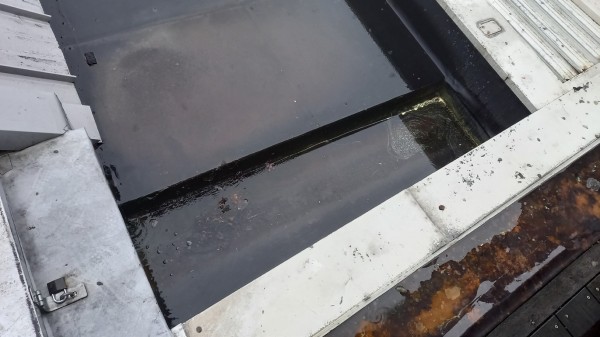Talking about Building Maintenance in New Zealand

Building maintenance is often forgotten about entirely or, at best, viewed as something that’s a bit of a nuisance to organise and then only when surplus funds are available.
Building maintenance is simply the periodic or routine work designed to keep the fabric of a building in good condition and to slow the rate of deterioration.
Identification & Record Keeping
As part of a building maintenance regime, the need to identify, and understand the defects and maintenance needs of a building is essential.
It is not uncommon to see generic maintenance specifications given to contractors that do not specifically address the maintenance item in question, such as the use of the now almost ubiquitous high-pressure water blaster for any form of cleaning.
Recording what is done is a must as, if forgotten, there is the risk of having to reinvent the wheel for a maintenance item that has worked well or the risk of repeating the errors of the past if it has not.
This information needs to be documented in some form of asset management register so that it is not lost and remains available to future asset or building managers and their maintenance teams.
Easily Neglected Maintenance Areas
Rainwater fittings
If there is one part of a building that gets most neglected from a maintenance point of view and yet provides probably the biggest risk to the building’s condition, it has to be rainwater fittings.
Blocked parapet gutters, scuppers, or downpipes are so often found to be the source of water ingress into a building. They can be difficult to see and easily forgotten until problems manifest themselves inside the building.
By this time, substantial problems of timber decay can have occurred within the concealed roof, floor, and wall areas. Problems may also only become evident some distance away from the actual source of a leak as water can run down inside walls and other building cavities unnoticed.
Eaves guttering

Much easier to see, but still often ignored, eaves guttering defects. There can be a multitude of these, including gutters that are:
- blocked by leaves, etc.
- poorly aligned and run water the wrong way
- rusted through
- far too small for their water catchment
It’s not unusual to see sections of guttering missing or gaps that have opened up to mitred joints. Despite water staining and green organic growths on the wall cladding below, basic maintenance of these critical building components can often be lacking for years before an associated problem inside the building drives remedial action.
Downpipes
Downpipes have their own set of issues. They can be damaged close to ground level where vehicles have hit, or people have kicked them. If poorly affixed to the wall, they are often left hanging loosely or missing altogether. Downpipes made of lead or copper may be stolen leaving the outlet to the gutter or hopper head above pouring water down the wall.
Ferrous metal downpipes often rust and split on the back face against the wall and leak whilst appearing intact from the front. And then, how many times do you see downpipes reducing in size/capacity as they come down a building, despite an added number of inlets, or a downpipe that has worked in collecting a roof’s rainwater only to pour it on the base of a wall because it has not been connected up to a sewer or soak pit? That water may seep into the building via the foundations or ground floor void.
Timber Decay
The consequences of even a small amount of water being allowed to soak into a building over some time can be significant. Timber decay can occur within concealed wall, floor, and roof framing and, from time to time, the right conditions can exist for some spectacular fungal outbreaks to occur. Not only can remedial works be very expensive and disruptive, but the financial implications of a maintenance issue can be exasperated by part of a building becoming unusable or unlettable and, ultimately, its capital value could be affected.
Periodic Building Maintenance Inspection Procedure
The adoption of a periodic building maintenance inspection and reporting process into the management of a building or other built asset really is common sense. A maintenance inspection routine may compromise a series of checks on the health of a building from:
- the owner or manager having a quick weekly or monthly look at certain vulnerable building components; to
- ticking off items on a simple maintenance checklist twice a year: and then
- having a Registered Building Surveyor carry out a five-yearly inspection and create a prioritised list of works needed in the next 5 years and a review of what’s been done in the last.
Such a system might take a bit of initial setting up and some administration over the years, but its value in the long term in keeping an asset in good (and saleable) condition may be substantial.
Quinquennial System
The ‘quinquennial system’ of maintenance has been developed overseas and has been in use for many years for church buildings in the United Kingdom.
The quinquennial system is a five-yearly inspection routine that proactively forward plans building maintenance and records what works have been carried out in the preceding period.
A quinquennial maintenance report will prioritise future work so that a budget can be prepared, and money can be targeted toward the most essential work to keep the building in good condition.
These priorities can be tuned to meet a particular client’s needs, but usually, they are marked:
- Urgent
- Within 18 months
- Within 5 years
- Desirable – (those not essential)
Benefits of the Quinquennial System
- The ability to plan and budget ahead.
- The ability to build up a detailed picture of a building and its repairing needs
- The ability to record the building’s weaknesses that reveal themselves over a long period.
Quinquennial System in New Zealand
The system hasn’t become commonplace yet in New Zealand but, as the inspection and reporting procedure requires considerable knowledge and experience of condition assessments, materials, and building defects, it is a potentially good source of work for NZIBS Registered Members when it does start being used here.
In Conclusion
The risk of not prioritising building maintenance is not worth the reward of putting it off for another day.
“An ounce of prevention is worth a pound of cure” ~ Benjamin Franklin







